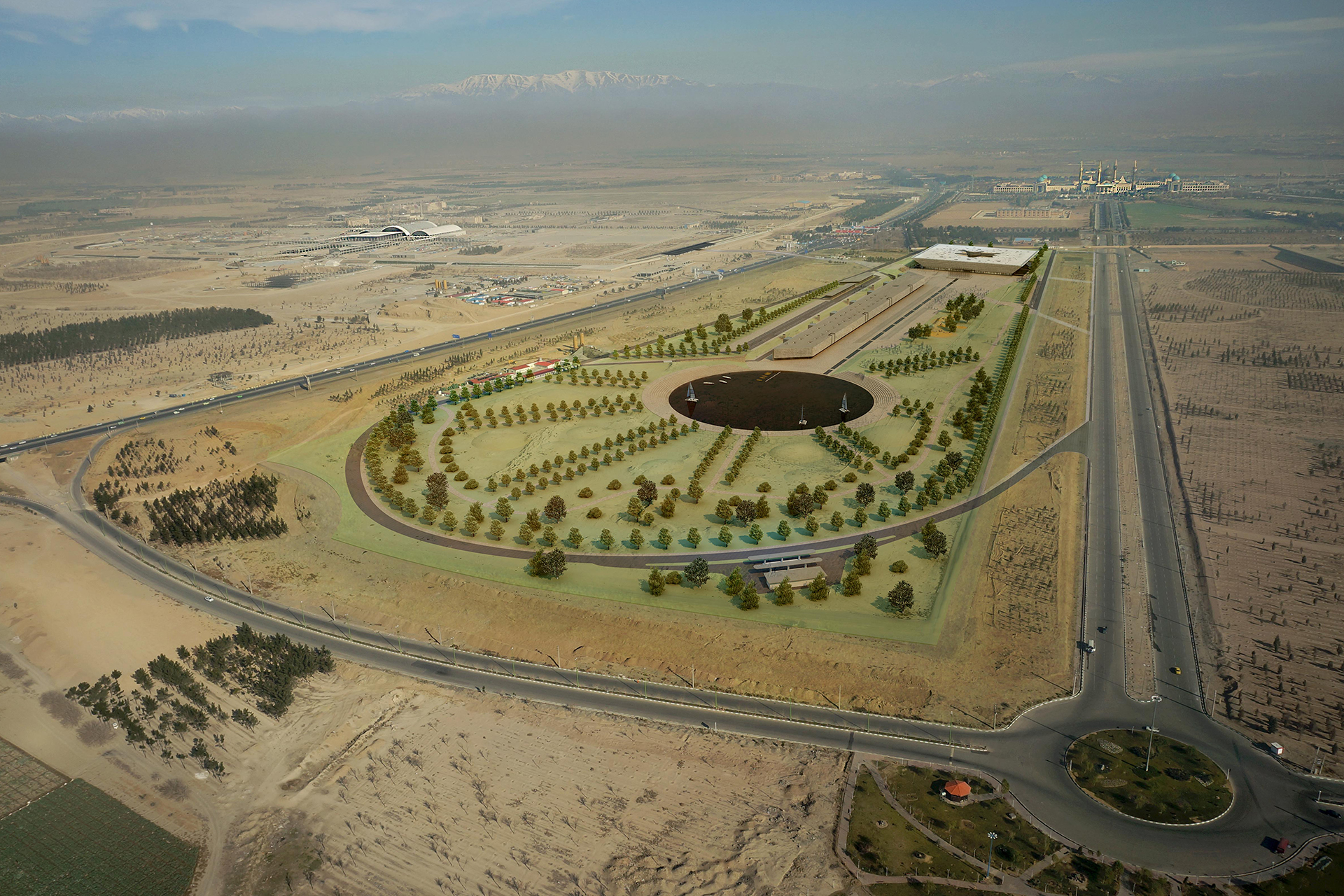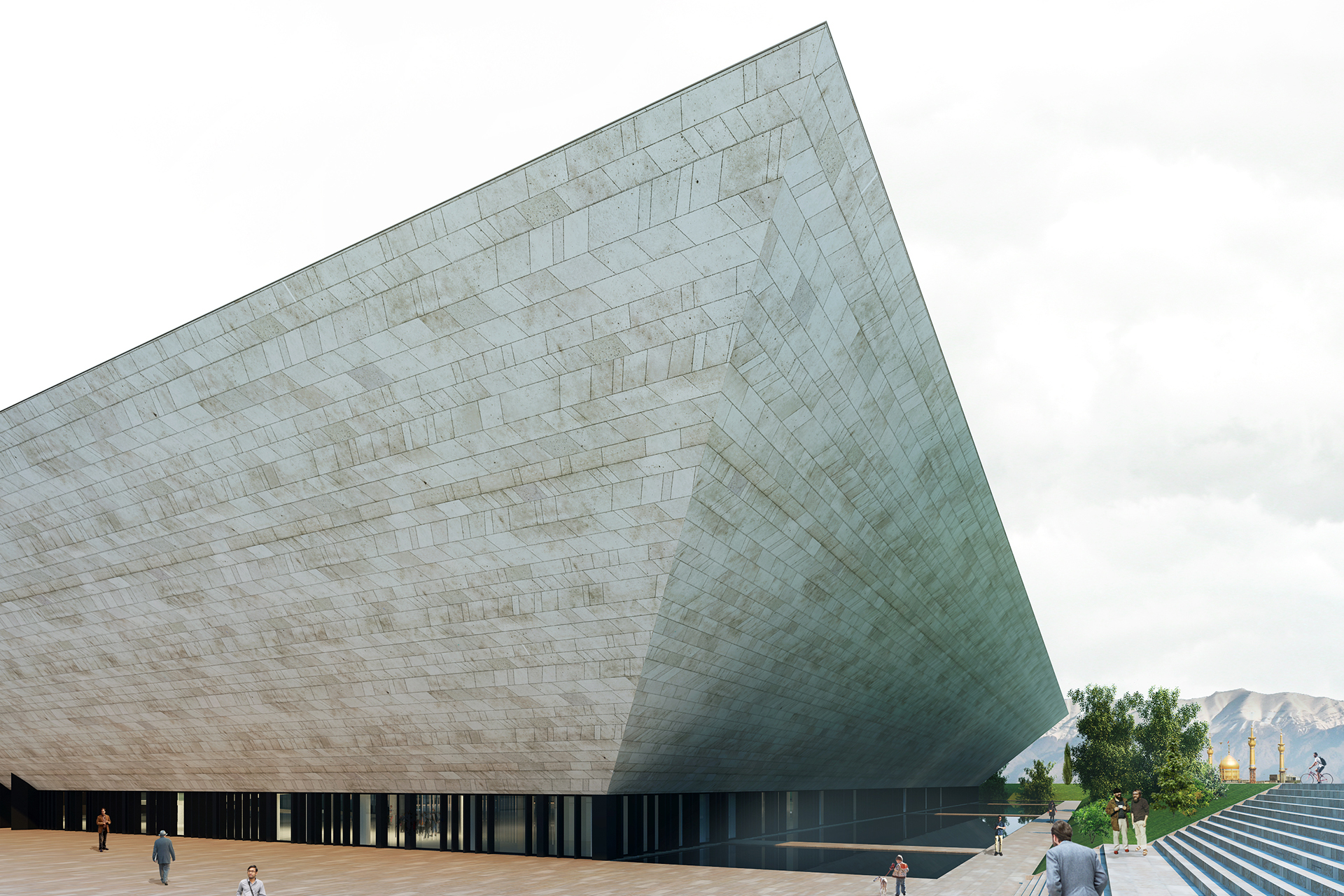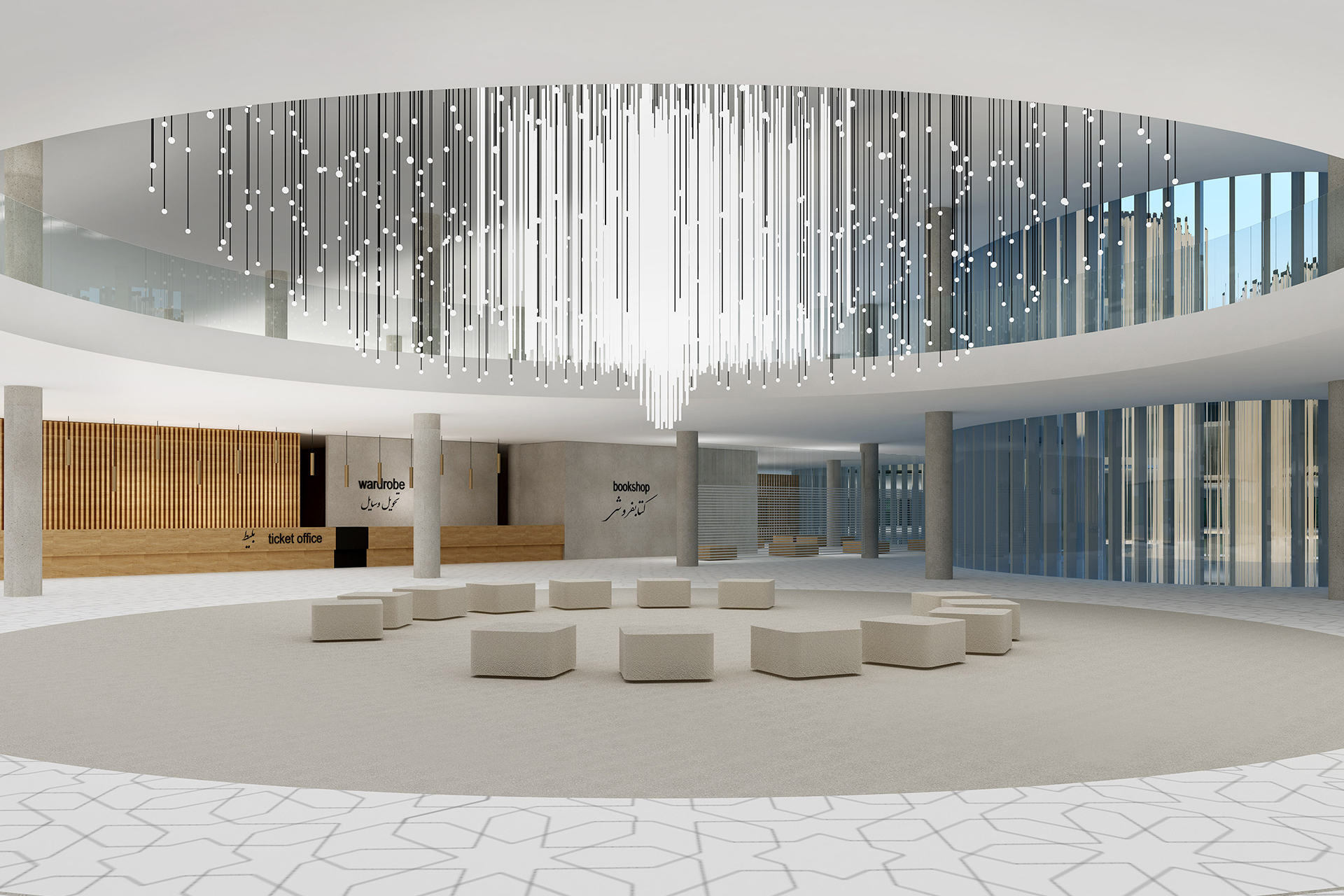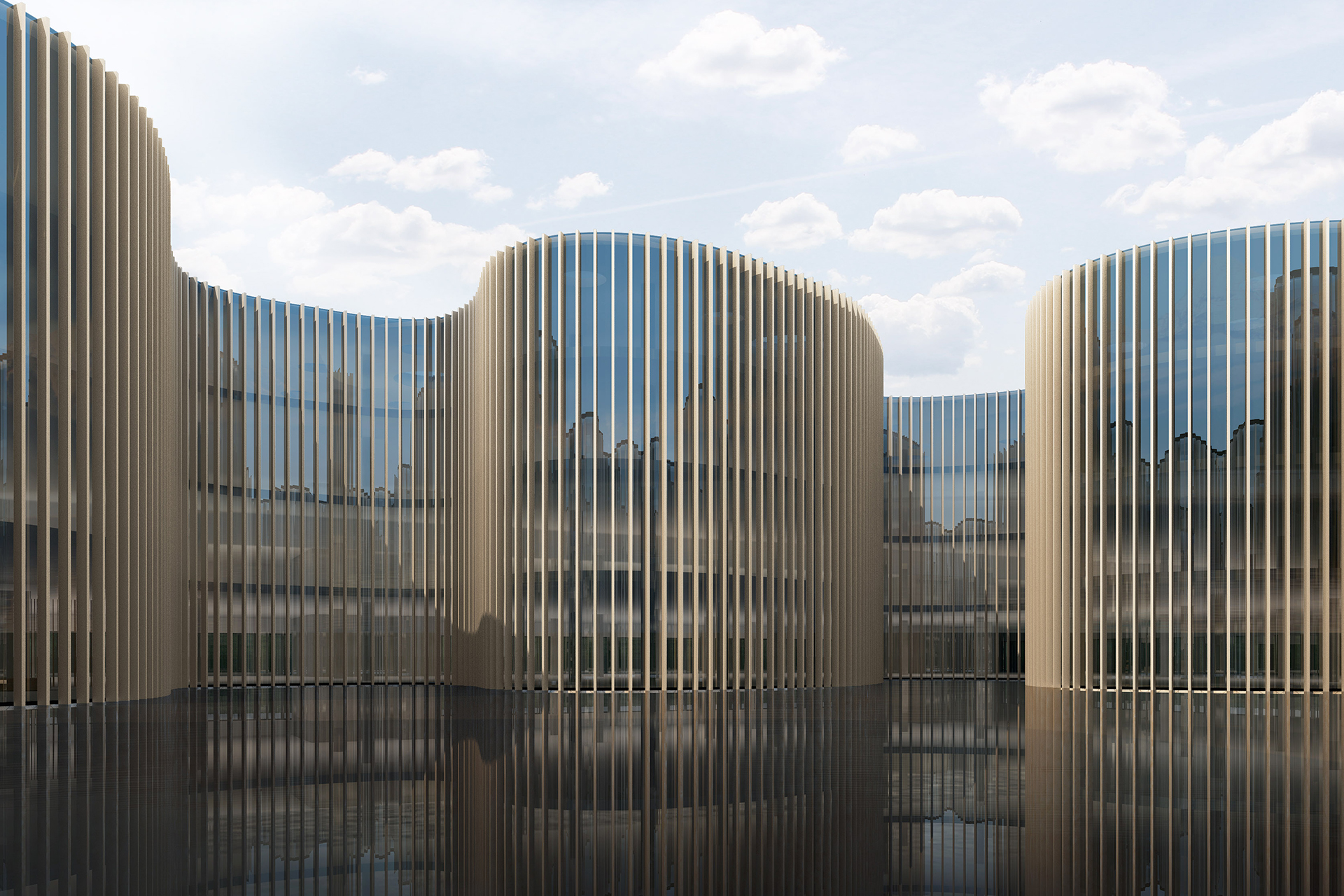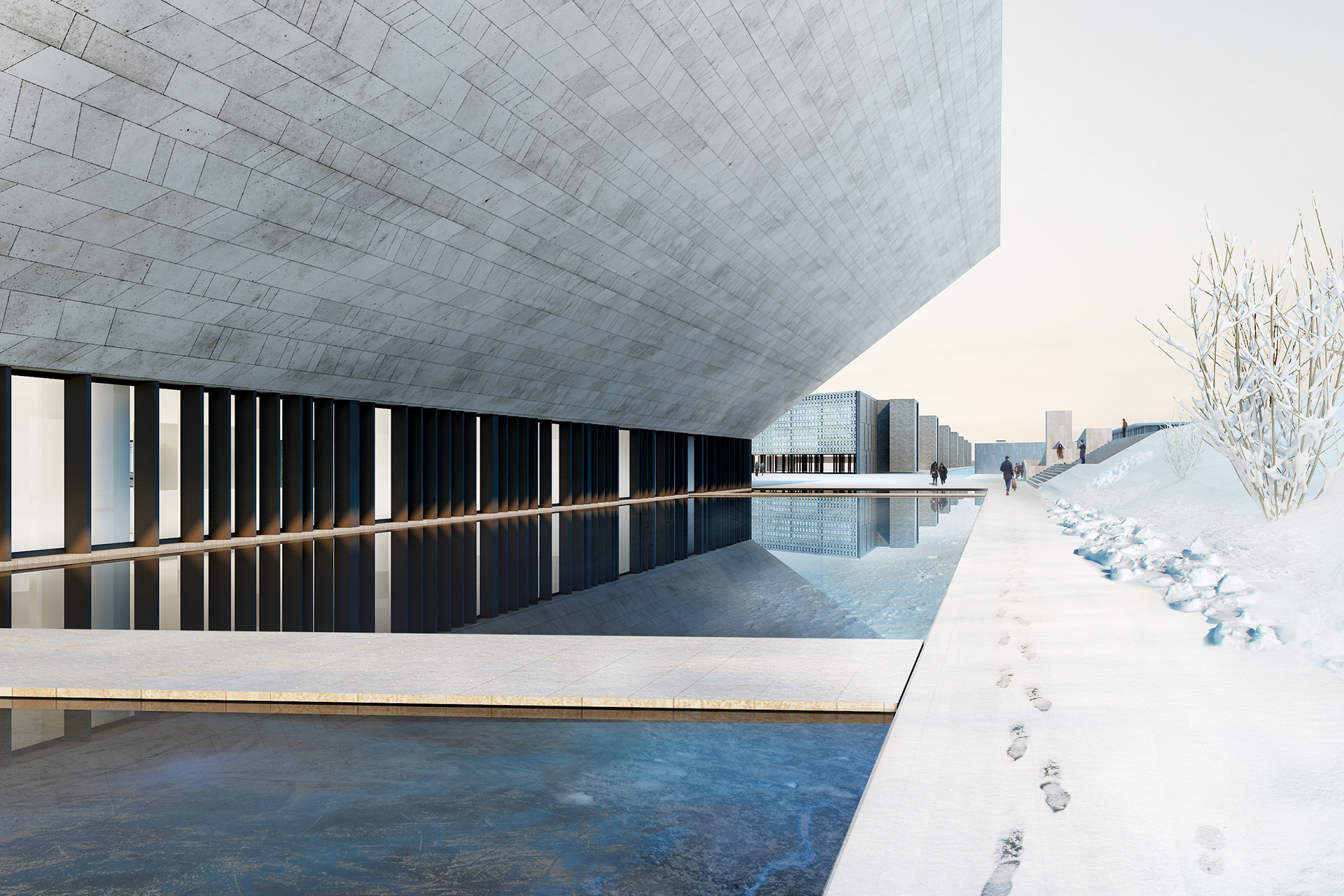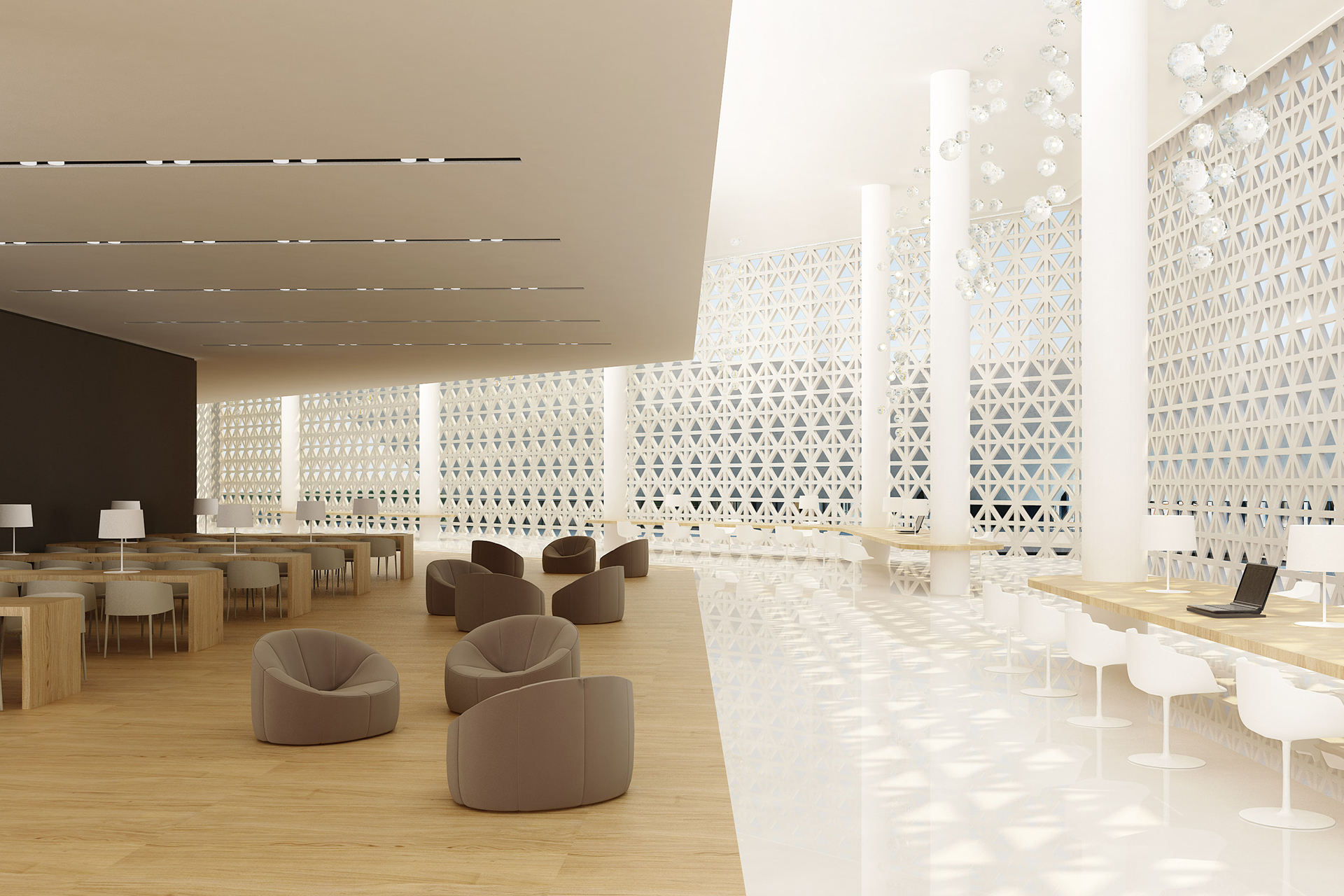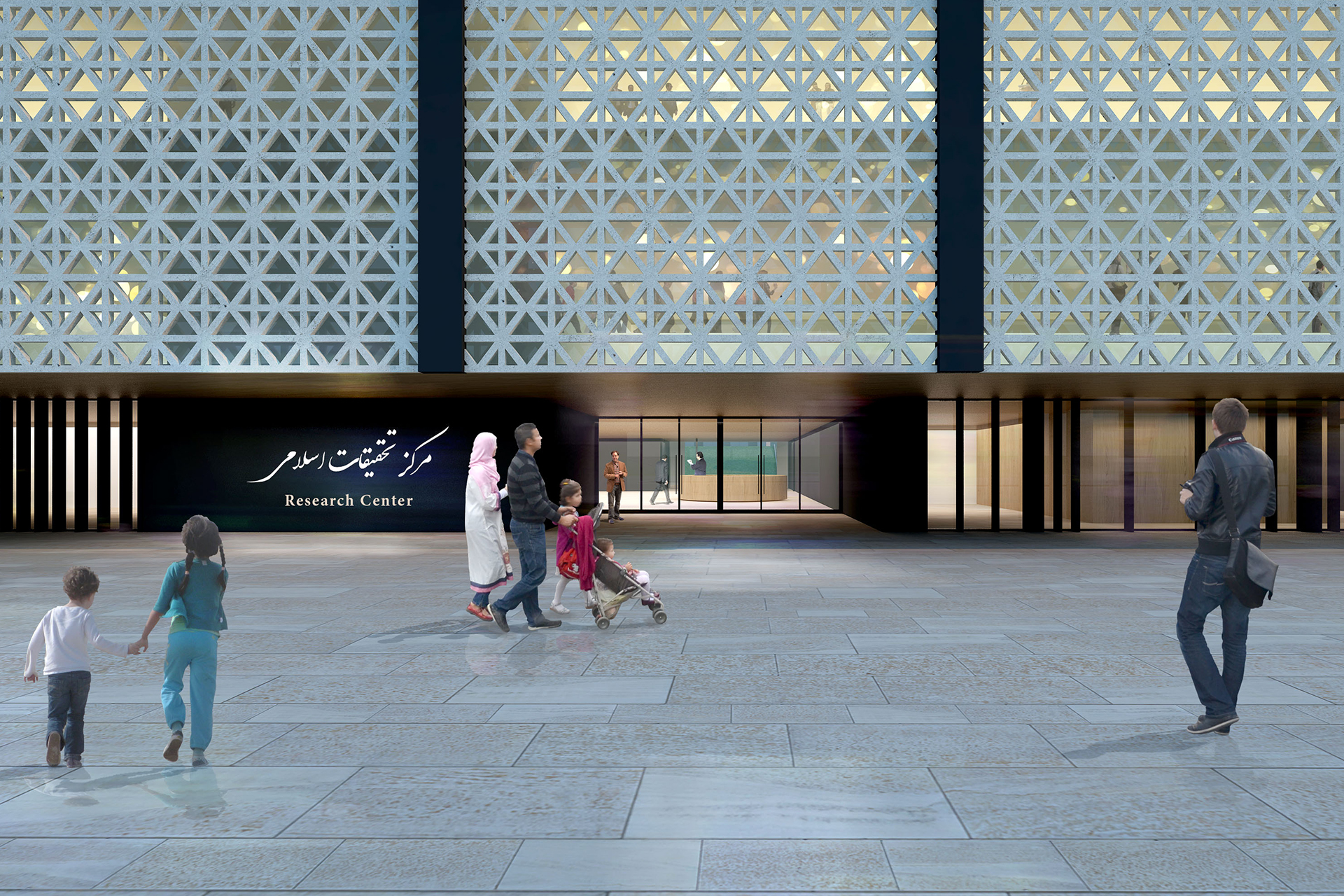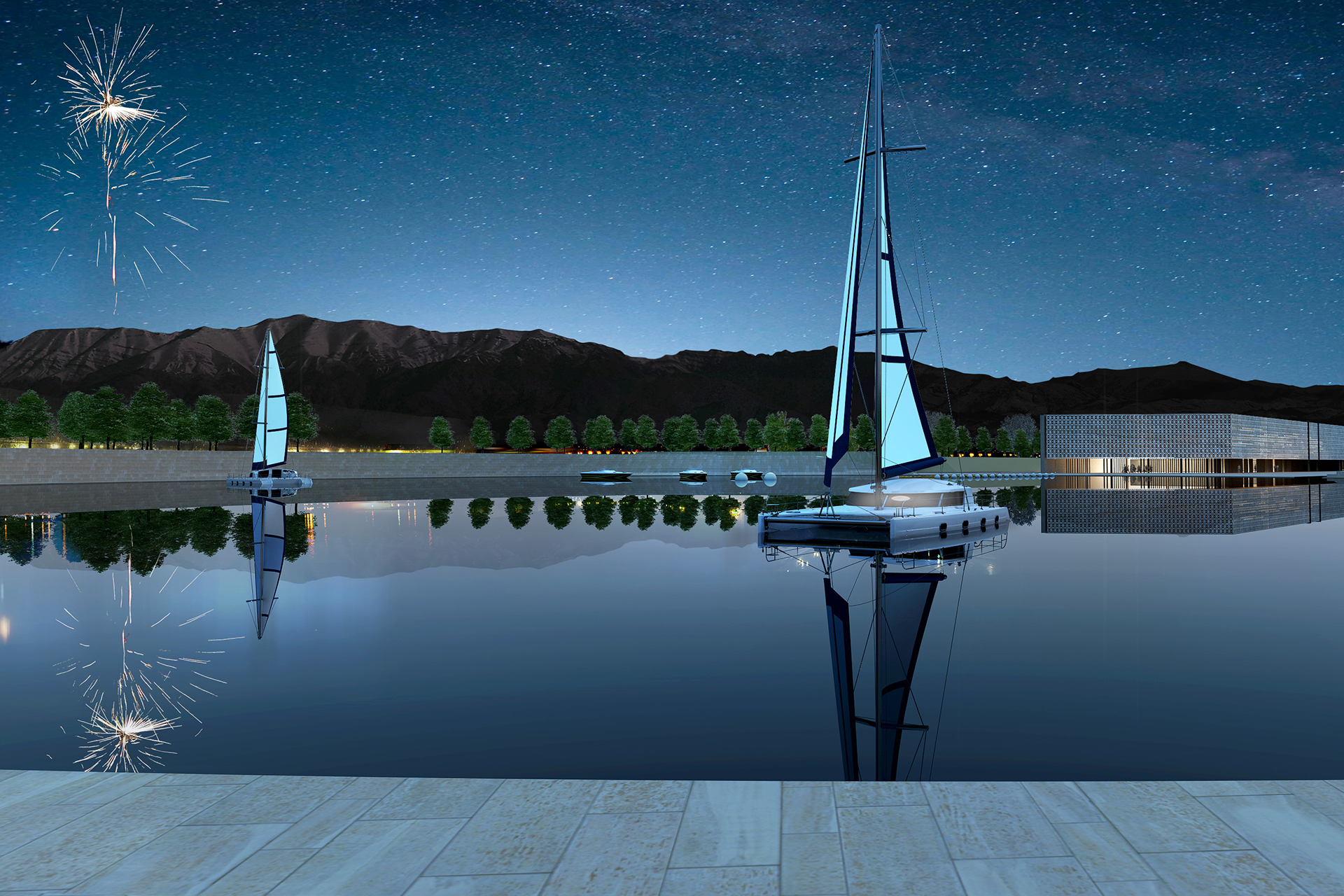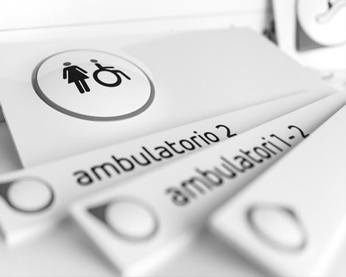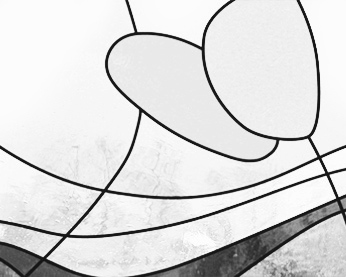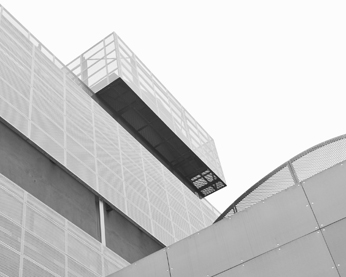MUSEUM OF THE ISLAMIC REVOLUTION IN TEHRAN
On a large vacant area south of the city of Tehran, the competition proposal envisions a massive land transformation to settle a new monumental center in close relation to the tomb of Ayatollah Komehini, located a little further north and visible from the site. The Museum of the Islamic Revolution and Sacred Defense is the monumental heart of the project, whose architecture is defined by a compact volume that expands skyward from its square base. On the ground floor, the glazed perimeter allows one to perceive the interior space and the courtyard occupied by the water basin, while the upper floors are clad with a continuous surface of diagonally cut stone slabs, like a myriad of closely spaced flakes. The museum is intended to be a protective casket that preserves and passes on the memories of recent Iranian history. The main museum-related activities are located along a linear building that structures the functional spine of the entire area. The façade continues, running along the central avenue and flanking the waterway marking the visual axis of the site until it meets the reservoir: water is a living element, a reminder of the process of change instilled by the Revolution.
